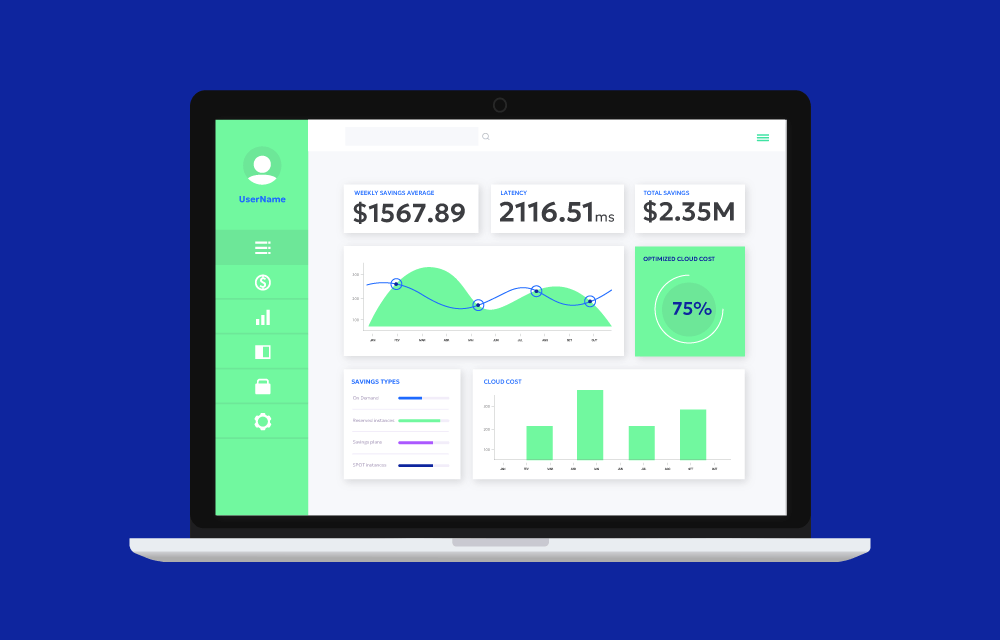History
The AWS Cost Optimization Hub was established to address the growing demand for effective cloud cost management solutions. As businesses increasingly moved to the cloud, AWS recognized the need to provide structured guidance and tools to help users manage their cloud spending effectively. The hub has evolved to include a variety of resources, such as detailed guides, case studies, and specialized tools like AWS Cost Explorer, AWS Budgets, and AWS Trusted Advisor, which aid in comprehensive cost management.
Market
AWS is a dominant player in the cloud services market, holding a significant share of 32% as of 2024. The need for cost optimization has grown alongside the increased adoption of cloud services. Major cloud providers offer cost management solutions, but AWS’s integrated approach through its Cost Optimization Hub sets it apart:
- Microsoft Azure: Azure Cost Management and Billing includes detailed cost and usage reports, budget alerts, and cost-saving recommendations.
- Google Cloud Platform: Cloud Billing Reports provide detailed insights to help users monitor and optimize spending.
- IBM Cloud: Offers Cost and Asset Management services to track and optimize cloud expenditures.
- Oracle Cloud Infrastructure: Provides tools for detailed cost analysis, budget tracking, and cost-saving recommendations.
These providers offer similar functionalities, but AWS’s dedicated hub offers a more comprehensive and centralized approach to cost management.
Technology
The AWS Cost Optimization Hub leverages a combination of advanced machine learning technologies for cost forecasting and budgeting and services to deliver effective cost management:
- Data Analytics: Utilizes advanced analytics to process and visualize extensive cost and usage data.
- Machine Learning: Employs machine learning algorithms to forecast costs and detect anomalies in spending patterns.
- Automation: Uses automation to streamline processes such as budgeting, cost allocation, and resource optimization.
- Integration: Seamlessly integrates with AWS tools like Cost Explorer, Budgets, and Trusted Advisor to provide a unified cost management solution.
Value proposition
AWS Cost Optimization Hub provides several significant benefits:
- FinOps Resources: Offers access to a wide array of resources, including detailed guides, best practices, and real-world case studies.
- Advanced Cost Monitoring Tools: Utilizes tools like AWS Cost Explorer, AWS Budgets, and AWS Trusted Advisor to deliver deep insights into cloud costs and usage.
- Significant Cost Savings: Identifies cost-saving opportunities and supports the implementation of strategies to reduce AWS expenditures.
- Scalability: Supports cost management for organizations of all sizes, from small startups to large enterprises.
- Support: Provides ongoing support and regular updates to ensure users can effectively manage their cloud costs over time.
Challenges
Users may encounter several challenges when utilizing the AWS Cost Optimization Hub:
- Complex Data: Managing and analyzing the vast amounts of data can be complex and time-consuming.
- Integration Issues: Integrating AWS cost management tools with existing financial and IT systems can be challenging.
- Cost Monitoring: Requires ongoing monitoring and adjustments to maintain cost optimization.
- Expertise Needed: Effectively utilizing the hub’s resources may require specialized knowledge in cloud financial management and AWS services.
Key features
Key features of AWS Cost Optimization Hub include:
- Cost Management Platform: Access to AWS Cost Explorer, AWS Budgets, and AWS Trusted Advisor.
- Best Practices: Detailed guides and best practices for effective cost management.
- Case Studies: Real-world examples showcasing successful cost optimization efforts.
- Savings Programs: Information on cost-saving programs like Savings Plans and Reserved Instances.
- Anomaly Detection: Tools to identify and alert users to unusual spending patterns.
For more details on AWS Cost Explorer features, visit AWS Cost Explorer Features.
Roles and responsibilities
Managing AWS Cost Optimization Hub involves several key roles within an organization:
- Chief Financial Officer (CFO): Ensures AWS spending aligns with financial goals and overall business objectives.
- FinOps Teams: Specialize in cloud financial management, focusing on cost optimization and resource allocation.
- IT and Cloud Architects: Design and implement cost-effective and scalable cloud infrastructure.
- Data Analysts: Analyze usage and cost data to provide actionable insights for cost optimization.
- Procurement Teams: Negotiate contracts and terms for AWS services to ensure value for money.
How to set up AWS cost optimization hub
- Access the Hub: Visit the AWS Cost Optimization Hub on the AWS website.
- Explore Resources: Review the available guides, best practices, and tools.
- Implement Strategies: Apply recommended cost optimization strategies to your AWS environment.
- Monitor and Adjust: Continuously monitor costs and adjust strategies as needed to ensure ongoing optimization.
Related concepts
- FinOps: A discipline focusing on cloud financial management and cost optimization.
- AWS Cost Explorer: A tool for visualizing, understanding, and managing AWS costs and usage.
- AWS Budgets: Allows users to set custom cost and usage budgets and receive alerts when they are exceeded.
- AWS Trusted Advisor: Provides real-time guidance to help users provision resources following AWS best practices.
References
- AWS Cost Optimization Hub
- AWS Cost Management Blog
- AWS Documentation on Cost Optimization
- Microsoft Azure Cost Management
- Google Cloud Platform Billing
- IBM Cloud Cost and Asset Management
- Oracle Cloud Cost Management



